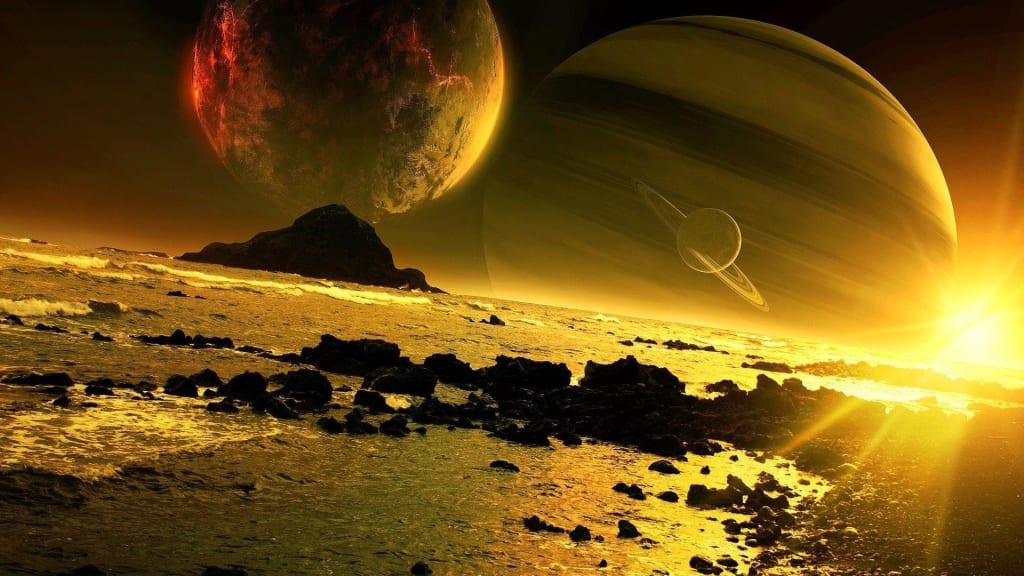Titan's Enigma: Unveiling Saturn's Moon
Exploring the Mysteries and Challenges of Saturn's Moon, Titan

Saturn's moon, Titan, holds a unique fascination for space enthusiasts and scientists alike. Its majestic allure, potential for life, and intriguing features make it an enticing destination for exploration. However, any journey to Titan would be a monumental undertaking, involving advanced technology, careful planning, and overcoming various challenges.
The distant moon of Titan lies a staggering 1.2 billion kilometers away from Earth, even at its closest approach. To embark on a mission to this icy moon, one would need to brace for a journey lasting approximately seven years. The spacecraft would require an elaborate life support system and ample provisions to sustain the crew during the lengthy voyage. Traveling through space for such an extended period necessitates precision engineering and a robust vessel capable of withstanding the rigors of the cosmic environment.
Upon reaching Titan's vicinity, the challenge continues with the complex task of landing on its surface. The moon boasts a thick atmosphere, allowing for a controlled descent, but careful selection of the landing site is crucial. Titan's lakes, which appear serene from afar, are not filled with water, but rather liquid methane. A successful landing would require avoiding these lakes and choosing a suitable spot for exploration.
Titan's unique characteristics set it apart in the realm of moons. Larger than Mercury and with an atmosphere thicker than Earth's, Titan boasts an environment that is both intriguing and hazardous. Its frigid climate, with temperatures plummeting to a bone-chilling minus 180 degrees Celsius, would necessitate specialized spacesuits to protect astronauts from the harsh cold. Titan's weaker gravity would make movement feel lighter and allow for higher jumps, enhancing the experience of exploration.
The moon's atmosphere, primarily composed of nitrogen, contains a significant amount of methane, rendering it unsuitable for human respiration. While Earth's air is composed of 95% nitrogen, Titan's atmosphere has a methane content of approximately 5%. Surviving on Titan would require advanced life support systems to provide breathable air and prevent exposure to the inhospitable conditions.
The mysteries of Titan extend beyond its atmosphere and surface temperature. Rainfall on Titan occurs not with water, but with liquid methane. Due to its lower gravity and dense atmosphere, raindrops would fall at a fraction of the speed observed on Earth. Rain on Titan becomes a unique spectacle, with slower and more deliberate movements that seem surreal in comparison to our familiar planet.
While the idea of taking a dip in Titan's liquid methane lakes might be intriguing, the challenges of doing so are substantial. The liquid methane's extremely low temperature and the need to protect against freezing and suffocation make this a perilous endeavor. Moreover, the composition of Titan's lakes is not the only hurdle; the logistics of a safe landing, proper equipment, and scientific objectives must all be meticulously planned.
However, in the midst of this fictional exploration narrative, an unexpected twist arises. A visitor from the future appears, introducing a mysterious element to the story. This twist adds an extra layer of intrigue, combining science fiction with scientific exploration. While such time-traveling encounters remain speculative, they contribute to the imaginative allure of space exploration and discovery.
In conclusion, the journey to Saturn's moon, Titan, would be an incredible adventure involving technological innovation, strategic planning, and overcoming numerous challenges. From the seven-year voyage to the careful landing and exploration of its unique features, a mission to Titan would test the limits of human capability and scientific understanding. Amidst the scientific marvels, the narrative takes an imaginative turn, introducing an unexpected character from the future, which serves to enhance the speculative and futuristic elements of the story. Whether in fiction or reality, the mysteries of Titan continue to captivate our imagination and fuel our fascination with the cosmos.





Comments
There are no comments for this story
Be the first to respond and start the conversation.